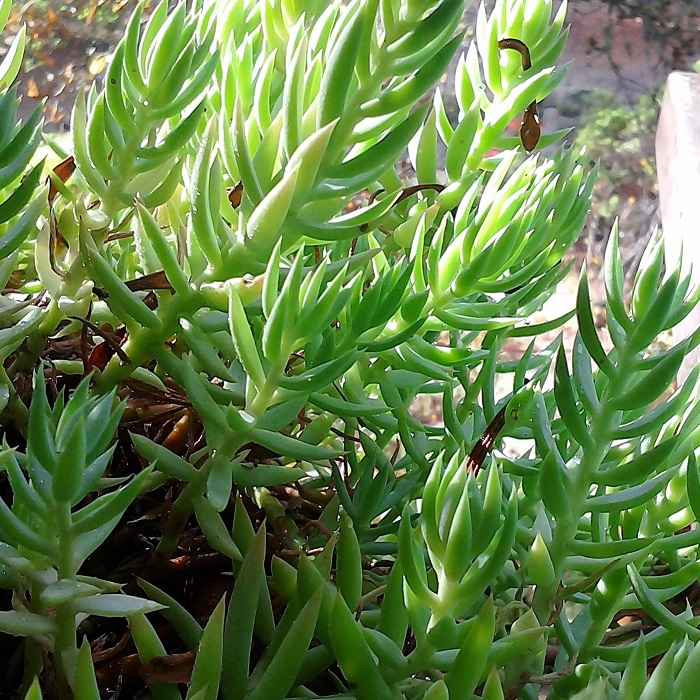UNITED STATES—There are all sorts of succulent plants, ranging from finely textured small stonecrops to huge suguaro cactus. Because aloes and agaves are succulents, the closely related yuccas, such as Joshua tree and Spanish bayonet, are commonly considered to be succulents as well. Even begonias and impatiens could be considered to be succulents.
Succulent plants are some of the most distinctive plants available. Foliage can be various shades of green, as well as yellow, red, blue, orange, purplish, gray, bronze, nearly black or variegated. Leaves may be thick and fleshy like those of jade plants, or thin and neatly arranged in tight rosettes like those of aeoniums. Cacti have no real foliage, but some have flashy flowers.
Except for the larger sorts of cacti and some yucca, most succulents are very easy to propagate. Jade plants and iceplants grow very easily from stems simply stuck wherever new plants are desired. Aloes and hen-and-chicks grow just as easily from pups (sideshoots) separated from parent plants. Technically, even leaves can be rooted, and will eventually grow into new plants.
Because scraps from pruning can be used as cuttings, there is rarely any need to actually take cuttings from desirable growth. Where more Hottentot fig (freeway iceplant) is needed on a freeway, it simply gets ‘plugged’ (as cuttings) from scraps of debris from where established growth needs to be cut back to an edge. There is much more debris than can be used!
Pots of mixed succulents are ridiculously easy to grow simply by filling pots with potting soil, and then plugging bits of various succulents. All sorts of contrasting colors and forms can be mixed. As plants grow, those that dominate can either be pruned back, or given more space by removing slower plants. The removed plants need not be wasted, but can be plugged somewhere else.
Small succulents are just as easy to plug into informal walls of stacked stone or broken concrete. Some small succulents actually stabilize loose stone. Their docile and finely textured roots are not likely to do any damage.
Highlight: blue spruce stonecrop
It may not be as useful as those marketing it say it is, but blue spruce stonecrop, Sedum reflexum ‘Blue Spruce’ is a nice grayish component to pots of mixed perennials. It contrasts nicely with golden foliage, and looks great with the chartreuse foliage of closely related ‘Angelina’ stonecrop. The limber stems cascade a few inches over the edges of tall urns and hanging pots.
The succulent leaves are quite small, and as the name implies, look like plump blue spruce needles. The succulent stems do not stand much higher than six inches before flopping over. They do not get much wider than high initially, but have a sneaky way of rooting where they touch the ground to cover more area. Yellow flowers bloom just above the foliage in summer.
What blue spruce stonecrop does not do well is uniformly cover large areas of hard or dry soil. It can spread nicely, but is patchy, with thin spots and thick spots. It is really only reliable as ground cover over small areas. It prefers to be watered occasionally, even though it does not need much water. It also likes relatively loose or friable soil, even though it does not need rich soil.






